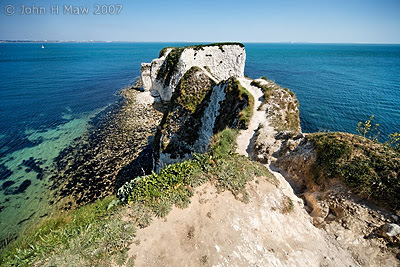Vignetting - Friend or foe

What is vignetting? Wikipedia defines it as "a reduction in image brightness in the image periphery compared to the image centre" - read more here. In other words it is seen in images that show darkening around the edges. It can occur for many reasons. It may be due to limitations in the lens (optical vignetting) or it may be caused by something getting in the way of the light, such as a lens hood or filter (mechanical vignetting). Wedding photographers sometimes use masks attached to the lens hood to intentionally produce more pronounced vignetting.
Now I have made reference to my favourite RAW converter in the past (DXO Optics Pro, in case you had forgotten). It has many very clever tools and tricks to improve an image, including the ability to correct failings in various lenses (in supported lens/body combinations). One of its controls which is set on by default it the anti-vignetting option. Adobe's Camera RAW converter (that comes as part of Photoshop and Lightroom) also has a tool for reducing vignetting, although it is not as sophisticated as it is not tailored to each specific lens.
So, is it a good thing (as some wedding photographers obviously think) or a bad thing? After all, lens designers try to reduce it, software manufacturers (like DXO and Adobe) come up with ways of eliminating it.
Well, frankly I think it depends. In many images that I have converted recently I have turned the vignetting correction off (as can be seen in the image accompanying this piece). I liked the look of the darker edges and particularly darker corners, yet when I found that one of my filters was causing somewhat abrupt vignetting right in the extreme corners I bought a replacement to cure the "problem". When I used to print in a darkroom it was considered quite normal practice to use "edge burning", an additional exposure (darkening) around the edges of the print of maybe 10%. It was felt that this encouraged the viewer to scan the image for longer, instead of moving on. Now this is not the same thing, The edge burning was along each straight edge of the print, and so was rectangular in nature, rather than circular. But maybe, in the right circumstances a bit of vignetting can perform a similar visual function.
But what function is it performing anyway? Lets look at a couple of factors that can change how we look at images. Firstly, there seems to be a general tendency for people viewing images to be attracted to the lighter parts of the image. The eye naturally seems drawn to lighter areas in preference to darker ones. Secondly, when our eyes are drawn towards the edge of an image (and in particular the bottom right corner*), and if nothing pulls the attention back towards the centre again, the chances are that we will move away from this image and on to another one, with the result that the image seems less interesting or involving. So the theory is that if you can hold the eye within the image, it will seem more interesting and the viewers attention will be held for longer.
So, in the final analysis you choose.
*The bottom right corner is only significant for people brought up in a society where the convention is to read from top left to bottom right. At the bottom right you leave the page and turn over or move on in some way.
Image: Old Harry Rocks, Dorset, April 2007

